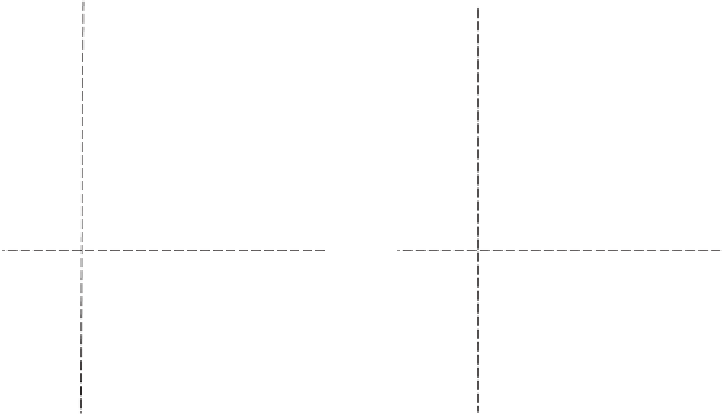Information Technology Reference
In-Depth Information
P
j
P
j
P
i
P
k
P
i
O
P
k
(a)
(b)
Figure 10.10
Skew-symmetry for (a) three points excluding the origin and (b) three
points including the origin.
result and unlike most other plots that we show, the position of the origin is crucial
and cannot be shifted as in Section 2.4. Figure 10.10 shows the importance of the ori-
gin. If we interpret
n
ij
>
0asmeaningthat
i
is dominated, or preferred, by
j
and write
this relationship as
i
j
, then in Figure 10.10(a) we have
i
j
,
i
k
and
k
j
,so
i
k
j
forms a consistent triad. However, in Figure 10.10(b) we have
i
j
,
j
k
and
k
i
,so
k
i
j
k
is inconsistent. This kind of inconsistency can occur in
preference data and the area plot allows its representation according to whether or not
the points representing a triad contain or do not contain the origin.
Finally, we note the important special case of linear skew-symmetry, written alge-
braically as
N
=
u1
−
1u
or
n
ij
=
u
i
−
u
j
. This is a common feature of data and because
v
=
1
is easily recognized
by giving a linear plot in hedron representations. The line need not be vertical, as
u
and
v
in
uv
−
vu
may be replaced by any pair of linear combinations of
u
and
v
, as follows
from the result
)
−
(α
)
=
(λβ
−
αµ)(
uv
−
vu
).
(λ
u
+
µ
v
)(α
u
+
β
v
u
+
β
v
)(λ
u
+
µ
v
(10.7)
This demonstrates another invariance property of hedron plots, allowing much free-
dom in choosing the coordinate representation. Clearly, area is not affected by rotations,
neither is it by scaling in one direction when compensated by inverse scaling in the
orthogonal direction; a sequence of scaling followed by rotations is permissible. All pos-
sibilities are covered by (10.7) and allow improved hedron representations, including the
possibility of rotating linear features to be vertical. Even when (
λβ
−
αµ)
=
1, the only








